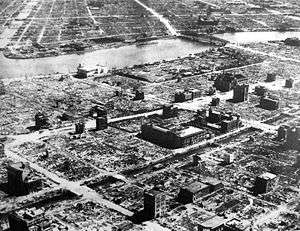Japanese Village



Japanese Village was the nickname for a range of residential houses constructed in 1943 by the U.S. army in the Dugway Proving Ground in Utah, roughly 100 kilometers (62 mi) southwest of Salt Lake City.
Dugway was a high-security testing facility for chemical and biological weapons. The purpose of the replicas of Japanese homes, which were repeatedly rebuilt after being intentionally burned down, was to perfect the use of incendiary bombing tactics, the fire bombing of Japanese cities during World War II.
The principal architect for Japanese village was Antonin Raymond who had spent many years building in Japan. Boris Laiming, who had studied fires in Japan, writing a report on the 1923 Tokyo fire, also contributed.[1]
The most successful bomb to come out of the May–September 1943 tests against the mock-up Japanese homes was the napalm-filled M-69 Incendiary cluster bomb. Contenders had been the M-47 (containing coconut-oil, rubber, and gasoline) and the M-50 (a blend of magnesium and powdered aluminum and iron oxide). Also tested was the "Bat bomb" a lightweight "bat incendiary" that was attached to live bats.
For the tests B-17 and B-24 bombers were used operating at normal bombing altitude, and the effects on the villages were meticulously recorded.
Popular culture
The novel, The Gods of Heavenly Punishment by Jennifer Cody Epstein has a fictionalized account of the building and destruction of the Japanese Village.
See also
Further reading
- Stewart Halsey Ross, "Strategic bombing by the United States in World War II"
References
External links
![]() Media related to Japanese Village (Dugway) at Wikimedia Commons
Media related to Japanese Village (Dugway) at Wikimedia Commons
- German-Japanese-Village
- Aerial view of German and Japanese villages, May 27 1943
- Assault on German village
- US Army Bases
- Dugway MIL site on the village (With images of the village)
- Incendiary jelly Time Magazine on M-69